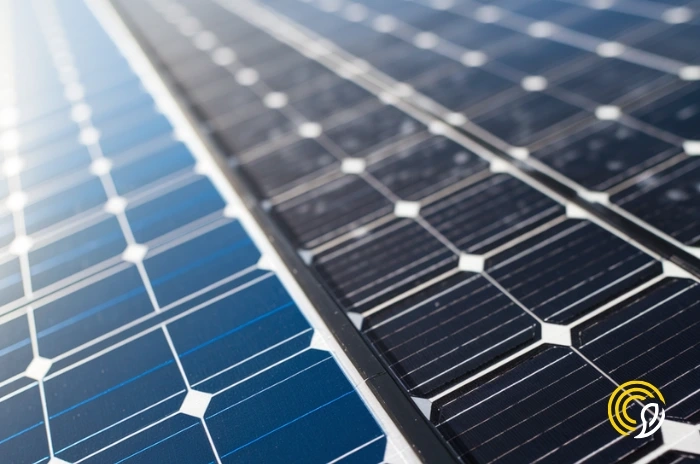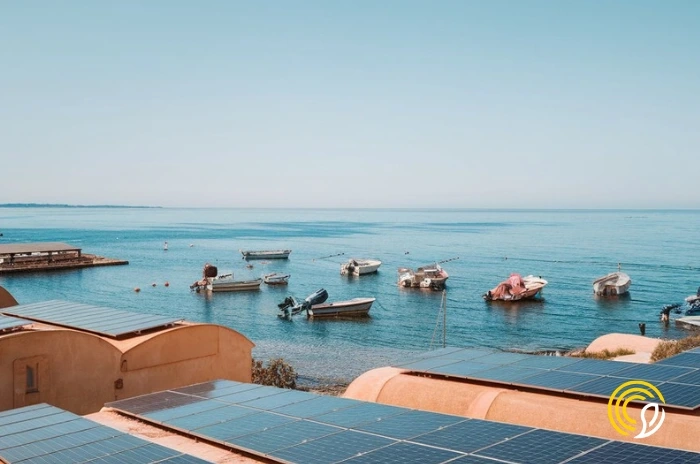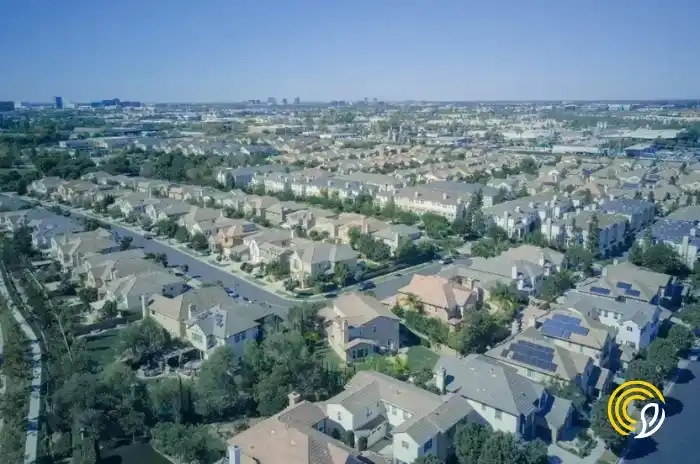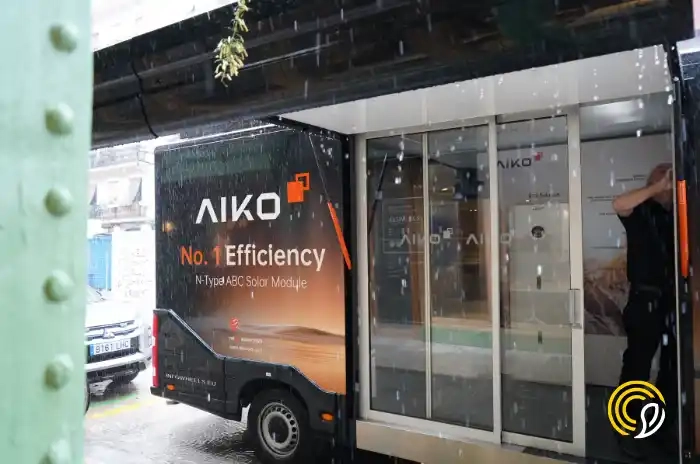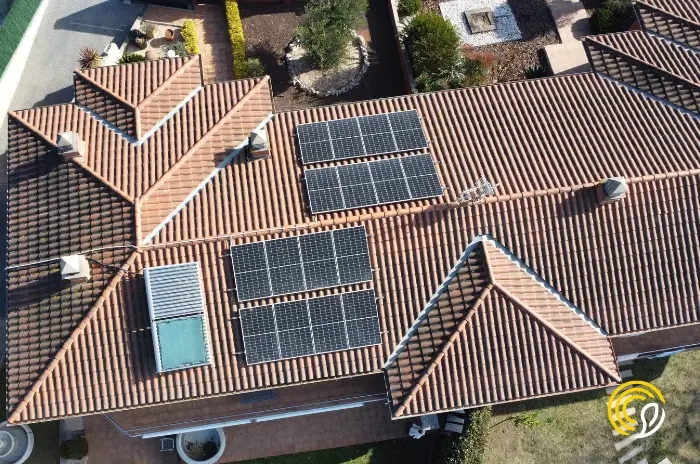
How long does it take to install solar panels on a roof?

Head of Sales Operations and Marketing at Sunhero, specialised in strategic planning and commercial excellence, passionately advancing solar energy adoption across Spain.
16/11/2024
6 min read
Table of Contents
Solar photovoltaic energy is a type of renewable energy. It is produced by solar rays, making it a clean, inexhaustible, and free source of energy. Fortunately, Spain is one of the countries with the most hours of sunlight throughout the year, making it very convenient to use this energy source for our daily energy consumption.
Moreover, for several years now, both Spanish and European authorities have been aiming to meet sustainable development goals (SDGs) and to decarbonise the economy, with the main focus on increasing the production of 100% renewable energy as a means to minimise greenhouse gas emissions into the atmosphere. One of the most efficient mechanisms to achieve this is through the installation of photovoltaic solar panels.
Therefore, if you are considering adopting solar energy for your home or business, you might have several questions about the solar panel installation process on residential or commercial properties. Thus, one of the most common questions is how long it takes to install solar panels on a roof.
Before the installation of the solar panels
The first step will be to receive a commercial proposal with an estimate of the solar photovoltaic energy generation that your property might achieve. This report will be prepared based on the energy needs you provide, as well as other data about the roof of the property, whether residential or commercial. Typically, the next step is to organise the onsite visit of a certified installation technician to carry out the following checks:
Check the condition of the roof and the electrical system
This is key to determining the viability of the installation. The roof must be in good condition as a solar installation has a lifespan of around 30 years, and access to the roof during this time will be more difficult, in addition to the extra cost of having to remove and reinstall the solar panels if maintenance work on the roof is required. Moreover, the solar panels that make up the photovoltaic installation are quite heavy, and the roof structure must be able to support their weight. This involves certain checks before proceeding with the installation. The same applies to the property’s electrical system. If it is very old, it is necessary to ensure that it is compatible with the installation requirements and that it will be safe to install. Sometimes it is simply necessary to resize the electrical installation.
Check the location of the property
This will allow us to determine its orientation, inclination, and usable roof surface area. This factor will affect the potential for electricity generation, making it also a determinant factor.
Gather the necessary information to prepare the installation documents
The type of property, its use, the electrical consumption habits, and the annual energy expenditure. This helps us determine how much electrical power will need to be generated to cover the energy expenditure of your property, also depending on, of course, the preferences and needs of the customer.
Along with the estimated generation study, the budget for the work to be carried out and the cost of the components will be attached. The report will indicate the number of recommended panels to be installed and their power. Also, the inverter or battery, if applicable, depending on the customer’s preferences.
Once this document is accepted, we move on to the next phase of the process: the permits and installation.
Permits and installation of the solar panels

Request the necessary permits to carry out the installation
At Sunhero, we will contact the local administrations to start the applications. The procedures for this type of activity must be managed with the town hall of the locality where the property is located.
It is usual for solar panel installations to only require notifying the local council of the commencement of work. That is, a simple informative note is usually sufficient. Thus, a building permit is not usually necessary for this. However, each region and each town hall has its own regulations for photovoltaic installations, so we will take care of meeting the requirements of each case to make the process simpler for you.
This is a procedure that does not take much time. Municipal authorisations can be obtained within approximately 2 to 3 weeks, although this depends on the administrative efficiency of each town hall.
Installation of the solar panels
Once the permits are received, the installation of the solar panels begins. The assembly requires 1 to 2 days at most. This timeframe is always subject to weather conditions permitting, that is, it does not rain or there is no wind. As you would expect, safety comes first and undertaking the installation in those conditions could put both the installation personnel and the building and its surroundings at risk.
In any case, at Sunhero we take all necessary precautions to comply with the safety standards required for the installation of photovoltaic solar panels.
The steps to carry out the installation are as follows:
- Place the structures that will support the solar panels.
- Attach the solar panels to the structures.
- Connect the solar panels to each other and then to the inverter.
- Connect the inverter to the electrical panel.
- If it involves off-grid installations, the photovoltaic system must also be connected to the batteries.
It is worth noting that as the work is carried out on the roof, in some cases scaffolding is necessary, so this scaffolding will be placed first of all and will also be the last thing to be removed from the property. Other times the work is done with the help of a crane.
After the installation: Legalisation
Once the installation process is complete, the legalisation process begins. The regulatory framework is outlined in RD 244/2019, which establishes the mechanism for photovoltaic self-consumption without surplus and with surplus. The required documents are subject to the self-consumption modality.
In the case of solar panel installations in residential properties, the self-consumption with surplus mechanism subject to compensation is normally applied, since the contracted power in this type of homes is less than or equal to 100 kW. This means that with this option you will receive a reduction in your monthly bill for the surplus of self-consumption fed into the general electric grid by your retailer.
The procedure is as follows:
- We, as authorised installers, deliver the technical certificate of the installation to you.
- The Autonomous Community where the property is located notifies the distributor within approximately 10 days of receiving the documentation that certifies the start-up of the installation.
- With this documentation, the distributor has about 5 days to send the contract modification to the retailer and the consumer.
- Once the modification is received, the consumer can notify the distributor within a maximum of 10 days if there are any discrepancies.
The complete process to install solar panels in your home includes the request for permits, the assembly, and the legalisation of the photovoltaic system and usually lasts between 2 and 3 months, although depending on the region of Spain it can extend up to 5 or 6 months.
On the other hand, installations of up to 15 kW usually do not require access and connection permits, which speeds up the process.
In conclusion, the time to install solar panels and carry out their legalisation varies. The implementation of a photovoltaic system requires some administrative steps, whose requirements and duration depend on each regional government and the efficiency with which each administration works.
Use our solar calculator to discover in less than a minute how much you could be saving with solar panels in your home or business.
FAQ
How long does it take to install solar panels on a roof?
Installation typically requires 1 to 2 days, but the complete process including permit acquisition and legalisation can take between 2 to 6 months depending on regional regulations and administrative efficiency.
What preparations are needed before installing solar panels?
Before installation, a commercial proposal and an energy generation estimate are prepared. The property’s roof and electrical system are assessed by a certified technician to ensure they are suitable for supporting solar panels and that the electrical system is compatible with the installation requirements.
What are the necessary steps for solar panel installation?
The installation steps include placing support structures, securing covers, fixing solar panels to supports, connecting panels to each other and to the inverter, and connecting the inverter to the electrical panel. Additional steps like connecting to batteries are required for off-grid systems.
What are the legal requirements for installing solar panels?
Legal requirements typically involve notifying the local council about the commencement of the work. Detailed requirements can vary by the Autonomous Community and municipality. The installation must comply with RD 244/2019 for photovoltaic self-consumption systems.
How is the solar panel system legalised after installation?
After installation, the process involves obtaining a technical certificate from the installer, notifying the Autonomous Community, and ensuring that the distributor adjusts the contract with the energy retailer. This legalisation confirms the system’s compliance and integrates it with the local energy grid, especially for systems designed to feed surplus energy back into the grid.
Start today!
Fill out our free solar calculator and get a custom quotation














